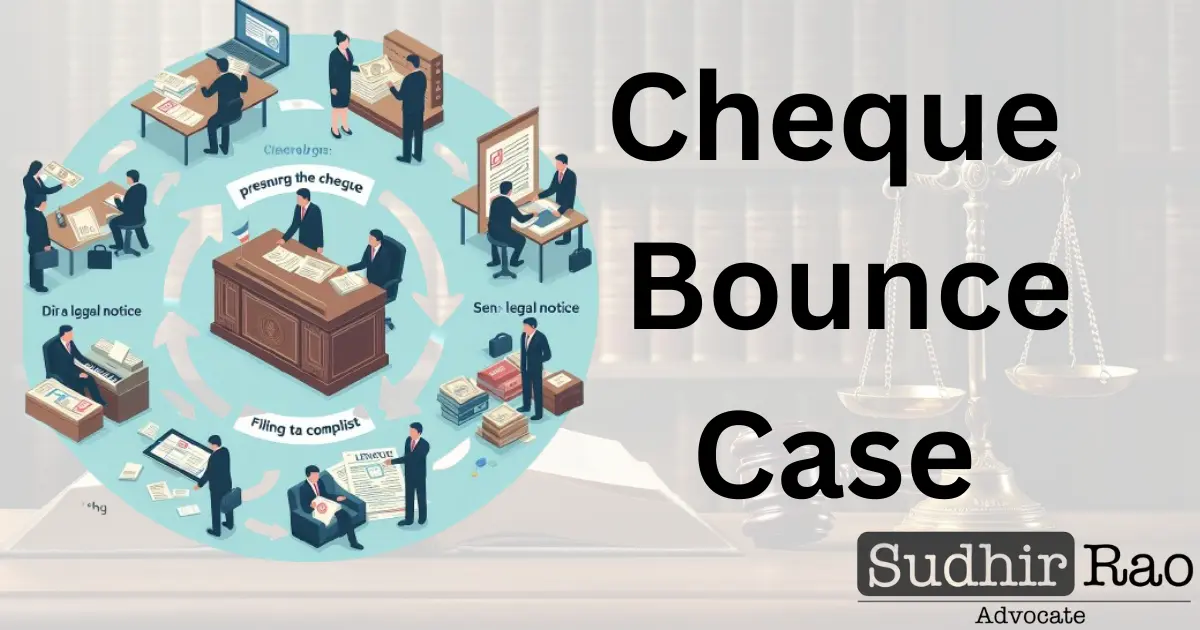Table of Contents
Navigating a Cheque Bounce: A Comprehensive Guide to Filing a Complaint and Securing Justice
Encountering a bounced cheque can be a financially frustrating and emotionally stressful experience. However, understanding the legal procedures for filing a complaint can empower you to pursue justice effectively. This article demystifies the legal steps, equips you with essential information, and highlights the significant role a qualified lawyer can play in strengthening your case.
Understanding Bounced Cheques:
A bounced cheque, also known as a dishonored cheque, occurs when a bank refuses to honor a cheque presented for payment due to insufficient funds in the drawer’s (cheque writer’s) account. This can arise from various reasons, including:
- Insufficient Balance: The most common reason, occurring when the account balance falls below the cheque amount at the time of presentation.
- Stop Payment Order: The drawer may have instructed the bank to stop payment on the cheque, rendering it invalid.
- Account Closure: The drawer’s account might have been closed before the cheque was presented.
- Technical Errors: In rare instances, technical issues within the banking system can lead to cheque bounces.
Legal Steps for Filing a Complaint:
- Demand Notice:
- Act swiftly! Within 30 days of receiving the cheque return memo from your bank, issue a legal demand notice to the drawer.
- This formal, written notice, served through registered post or courier, should demand payment of the cheque amount and any incurred charges (e.g., bank charges, legal fees) within a specific timeframe, typically 15 days.
- The notice should clearly state the details of the bounced cheque, including the cheque number, date, amount, and reason for the bounce as per the return memo.
- Maintaining a copy of the demand notice with proof of service (receipt from the post office or courier company) is crucial for legal documentation.
- Complaint Filing:
- If the drawer fails to respond or settle the amount within the stipulated time in the demand notice, you can file a complaint with the Magistrate’s Court within your jurisdiction.
- The court location depends on the location of the bank branch where the cheque was presented for encashment or the drawer’s address, whichever is more convenient for you.
- The complaint application form, typically available at the court or online, needs to be submitted along with the following documents:
- Original bounced cheque
- Cheque return memo issued by your bank
- Proof of service of the demand notice (receipt)
- Copies of any agreements or documents related to the transaction (if applicable)
- Proof of your residential address (ration card, utility bill, etc.)
The Role of a Qualified Lawyer:
While the process may appear straightforward, navigating the legal complexities involved in a cheque bounce case can be challenging. Seeking guidance from a qualified advocate/lawyer specializing in negotiable instruments, particularly those experienced in cheque bounce cases, can significantly benefit your case in several ways:
- Drafting a Strong Complaint: Lawyers possess the legal expertise to ensure your complaint is drafted accurately, adheres to legal requirements, and effectively presents the facts of your case, maximizing its impact in court.
- Presenting a Compelling Case: They can meticulously analyze the details of your case, build a strong legal argument, and effectively present evidence and arguments before the court, increasing your chances of a successful outcome.
- Legal Representation: Throughout the court proceedings, lawyers can represent you effectively, safeguarding your rights, ensuring your voice is heard, and addressing any legal complexities that may arise.
- Negotiation and Settlement: In situations where an out-of-court settlement becomes an option, an experienced lawyer can guide you through the negotiation process, ensuring you receive a fair and just settlement.
Additional Considerations:
- Time Limits: Adhering to the strict time limits for issuing the demand notice (30 days) and filing the complaint (within 15 days of the demand notice deadline) is crucial. Delays can weaken your case and potentially lead to its dismissal.
- Evidence Preservation: Maintaining meticulous records of all documents related to the transaction and the bouncing of the cheque, including the demand notice, bank statements, and communication with the drawer, is essential for building a strong case.
- Cost of Legal Assistance: Discuss fees and costs associated with legal representation upfront to make an informed decision that aligns with your financial situation. While legal costs can add to the initial burden, the benefits of securing a favorable outcome and potentially recovering the full amount owed, along with legal costs incurred, can outweigh the initial expense.
Remember, while this article provides a general overview of the process and the potential benefits of legal assistance, it is not a substitute for legal advice. Consulting a qualified lawyer who can delve deeper into the specifics of your case and guide you through the legal process in a personalized manner is crucial for.

